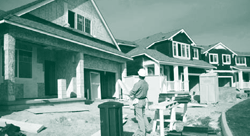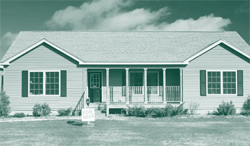February 2008
In this Issue
A National Crisis with Global Impact
Secondary Mortgage Markets: Increasing Capital and Improving Housing Affordability
Waiting for Technology: A Research Agenda
Which Type of House Would You Buy?
In the next issue of ResearchWorks
Which Type of House Would You Buy?
Although manufactured, modular, and panelized homes make up only one-fifth of housing starts in the United States, they can cost less than site-built homes with comparable features, amenities, and neighborhoods. Why, then, has factory-built housing been slow to penetrate the market? Optimal Solutions Group and the National Association of Home Builders conducted two surveys on behalf of HUD’s Partnership for Advancing Technology in Housing to test the idea that consumers’ familiarity, attitudes, and experiences with factory-built housing might be responsible for its sluggish adoption.

To assess the public’s familiarity with site-built, manufactured, modular, and panelized housing, the researchers designed a web-based survey conducted with a market research sample of 10,000 respondents and a random-sample telephone survey of 2,500 heads of households. Respondents were first asked to indicate on a 5-point scale how familiar they were with each type of housing. To test their familiarity, telephone respondents were then asked to identify the construction features typical of each housing type, and web-based respondents were asked to match 10 construction features with site-built, manufactured, modular, and panelized housing.
In addition, researchers showed web-based respondents unidentified photos of the four types of homes and asked them to rate each picture on several factors important to potential homebuyers: resale value, overall value, purchase price, quality of surrounding neighborhood, time required for assembly/construction, ability to choose design features, quality of construction, and the look and feel of the finished home. Without pictures to serve as a reference, telephone respondents simply rated each housing type on the same factors believed important to potential homebuyers. Finally, respondents were asked to rate the likelihood that they would purchase each type of housing.
In general, both sets of respondents were most familiar with site-built housing, which they perceived as having more features valued by potential homebuyers and which they were more likely to purchase. However, a number of factors appeared to influence the likelihood of purchasing a given type of house, including what respondents themselves had lived in, as well as their income, age, geographic location, knowledge of the housing features, and preferences.
Implications for Marketing Factory-Built Housing

Most respondents considered construction quality to be the most important factor in their decision to buy a home. This finding suggests that if factory-built housing is to gain wider acceptance and recognition, market strategies need to focus on the similarities in quality between manufactured/modular/panelized homes and site-built homes. The researchers suggested using fact sheets, final-product photographs, consumer education, and increased consumer exposure to promote acceptance of factory-built housing. The research team also recommended that marketing efforts be targeted to consumers who are most familiar with (and have a higher probability of purchasing) factory-built homes.
Factory-Built Construction and the American Homebuyer: Perceptions and Opportunities can be downloaded at www.huduser.gov/publications/destech/perception.html. See the report for sample demographics, survey questionnaires, and detailed findings.


